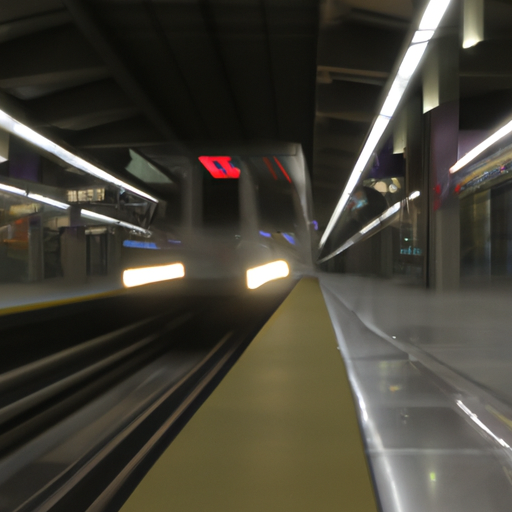
How Do I Handle Transportation In Cities With Extensive Subway Or Metro Systems?
Navigating transportation in cities with extensive subway or metro systems can seem daunting at first, but fear not! This article will provide you with some practical tips and tricks to help you master the art of getting around efficiently and hassle-free. From understanding the ticketing system to planning your routes and exploring the hidden gems of each city, you’ll soon become a confident urban explorer, effortlessly gliding through the bustling underground labyrinth of subway and metro lines. So, let’s dive in and unravel the secrets of seamless city commuting!
Planning your trip
When it comes to exploring a city with an extensive subway or metro system, proper planning is crucial. Before embarking on your adventure, take the time to research the subway or metro system of your chosen city. Familiarize yourself with the different lines, routes, and stops. This will help you understand the overall layout of the system and make navigating it much easier.
Obtaining a map of the subway or metro system is an essential part of your planning process. Most cities provide maps either online or at the stations themselves. These maps will give you a visual representation of the subway or metro system, including all the stops, transfer points, and different lines. Having a map on hand will prevent confusion and allow you to confidently navigate the system.
Identify the nearest subway or metro station to your destination. By doing this, you can plan your journey more efficiently and save time. Consider factors such as proximity to your accommodation, attractions, or places you wish to visit. Knowing the nearest stations will help you determine the most convenient route to take.
It’s also crucial to check the operating hours of the subway or metro system. Different cities have varying schedules, and some may have reduced services on weekends or holidays. By knowing the operating hours, you can plan your itinerary accordingly and ensure that you won’t be left stranded without transportation.
Understanding the fare system
To make the most of your subway or metro experience, it’s important to understand the fare system in place. Familiarize yourself with the different types of fare cards or tickets available. Some cities offer single-use tickets, while others provide reloadable fare cards for frequent travelers. Knowing your options will help you choose the most suitable one for your needs.
Take the time to understand the pricing structure of the subway or metro system. Some cities have a flat fare rate regardless of the distance traveled, while others have fare zones that determine the price based on the distance traveled. By knowing how fares are calculated, you can budget your transportation expenses accordingly.
Check if there are any discounts available for subway or metro fares. Many cities offer reduced fares for senior citizens, students, or residents. Some cities also offer day passes or tourist cards that provide unlimited travel for a specific duration. Researching these options can help you save money and make the most of your transportation budget.
Navigating the subway or metro station
Once you’ve arrived at the subway or metro station, navigating through it may seem overwhelming at first. However, by following a few simple steps, you can quickly become a pro at finding your way around.
First, locate the entrance to the subway or metro station. These entrances are usually marked with signage or can be found near major roads or landmarks. If you’re unsure, don’t hesitate to ask a passerby or station staff for directions. They are often friendly and more than willing to assist you.
Follow the signage and directions within the station. Most subway or metro stations have clear signs indicating the different lines, platforms, and exits. These signs are usually color-coded or have easily recognizable symbols. Stay observant and follow the directions to reach your desired platform.
Depending on the station’s design, you may need to use stairs, escalators, or elevators to access the platforms. Pay attention to any signs or markings that indicate the appropriate route. If you have any mobility concerns or heavy luggage, consider using elevators when available.
Identifying the correct platform for your desired direction of travel is crucial. Consult the map, signs, or electronic displays within the station to find the platform for your intended line. It’s important to ensure you’re on the right platform to avoid being on the wrong train and ending up at a different destination.
Purchasing tickets or fare cards
Before boarding the train, you’ll need to purchase a ticket or fare card. Most subway or metro stations have ticket vending machines or ticket counters conveniently located near the entrance or within the station.
Locate the ticket vending machines or ticket counters and approach them with your payment ready. These machines or counters are usually user-friendly and have language options to accommodate international travelers. If you’re unsure how to operate them, don’t hesitate to ask for assistance from a station staff member.
Select the appropriate ticket or fare card option based on your travel needs. If you’ll be using the subway or metro system multiple times, consider purchasing a reloadable fare card. If your journey is a one-time trip, opt for a single-use ticket. Take into account the number of zones you’ll be traveling through, if applicable, to select the correct fare.
Make the payment using cash or electronic payment methods. Some subway or metro systems accept credit or debit cards, while others may require cash payment. Be prepared with the appropriate currency and ensure you have enough funds to cover your fare.
Retrieve your ticket or fare card and keep it safe. Tickets are generally small and can be easily misplaced, so be sure to store them in a secure place such as a wallet or pocket. Fare cards, on the other hand, are often reloadable and reusable, so keep them in a safe and accessible location for future use.
Boarding the train
As you approach the platform to board the train, it’s important to observe the safety guidelines and warnings. These guidelines are often displayed on signs or announcements within the station. Pay attention to any warnings regarding platform gaps, automatic doors, or emergency procedures.
Wait for the train behind designated safety lines. Most platforms have clearly marked lines indicating where passengers should stand while waiting for the train. Stay behind these lines until the train has come to a complete stop.
When the train arrives, allow passengers to exit before boarding. This ensures a smooth flow of traffic and prevents congestion. Be patient and wait for passengers to disembark before making your way onto the train.
Once on the train, find a seat if available, or hold onto handrails or straps for stability. Trains can sometimes be crowded during peak hours, so it’s important to be considerate of other passengers. If you’re standing, find a comfortable spot and ensure your belongings are secure to avoid inconvenience to yourself and others.
Transferring between lines
In some cases, you may need to transfer between different subway or metro lines to reach your destination. Transferring can sometimes feel daunting, but with a little preparation, it can be a seamless experience.
Consult the subway or metro map to find transfer stations. These are stations where different lines intersect, allowing you to switch from one line to another. Locate these stations on the map and familiarize yourself with the transfer points.
Follow the signs within the station to reach the appropriate transfer platform. Transfer stations often have dedicated signs guiding passengers to the correct platform for each line. Look out for these signs and follow them to avoid getting lost.
When planning your journey, factor in additional time for transfers. Transferring between lines often involves walking through corridors or navigating escalators or stairs. Be mindful of these extra minutes when planning your schedule, especially if you have time-sensitive commitments.
Ensure you are on the correct train for your desired line. Pay attention to the announcements or electronic displays on the train indicating the upcoming stops or line names. If you’re uncertain, feel free to ask fellow passengers or station staff for confirmation.
Exiting the subway or metro station
As you approach your destination, it’s essential to prepare for exiting the subway or metro station smoothly.
Begin preparing to exit the train a few stops before your destination. Take note of the upcoming stops and familiarize yourself with the station name or landmarks associated with your destination. This will ensure you’re ready to disembark when the train arrives at your station.
Listen for announcements or watch for station names to ensure you don’t miss your stop. Many subway or metro systems have automated announcements indicating the approaching station or display signs that show the name of the next stop. Stay attentive and listen for any announcements to ensure you’re aware of your stop.
Gather your belongings and move towards the exit as the train arrives at your station. Allow other passengers to exit the train first before making your way towards the exit doors. Be courteous and avoid blocking the way for others.
Follow the flow of passengers and exit through the designated gates. Most subway or metro stations have gates or turnstiles that require you to swipe or tap your fare card to exit. Follow the instructions provided, and if you encounter any difficulties, don’t hesitate to seek assistance from station staff.
Exploring alternative transport options
While the subway or metro system is often the most efficient way to get around a city with extensive coverage, it’s also worth considering alternative transport options for specific situations.
Consider using buses, trams, or other public transportation modes for areas not easily accessible by subway or metro. These modes of transport can expand your reach within the city and allow you to explore areas that may not have a nearby subway or metro station.
Use ride-sharing services or taxis if needed. In certain cases, such as late night travel or situations where you require more flexibility, ride-sharing services or taxis can be a convenient option. These services allow door-to-door transportation and can be particularly useful when traveling with heavy luggage or in groups.
Utilize bike-sharing programs or rent bicycles for short distances. Some cities have bike-sharing programs or rental services that allow you to rent bicycles for short periods. This can be a fun and eco-friendly way to explore your surroundings, especially in areas with bike-friendly infrastructure.

Navigating the city above ground
While the subway or metro system is a fantastic way to travel, don’t forget to explore the city above ground as well. Here are some tips for navigating the city streets:
Study street maps and landmarks to familiarize yourself with the city. Before venturing out, take a moment to study maps of the city streets and landmarks. Familiarize yourself with the main roads, attractions, and key locations to navigate with ease.
Use navigation apps or GPS devices to navigate. If you have a smartphone or GPS device, take advantage of navigation apps that provide real-time directions. These apps can guide you to your desired destination, whether you’re walking or using alternative modes of transportation.
Walk or use pedestrian-friendly routes when possible. Exploring a city on foot allows you to immerse yourself in its atmosphere and discover hidden gems along the way. Take advantage of pedestrian-friendly routes, if available, to explore the city at your own pace.
Be cautious of traffic rules and pedestrian signals. Just like any other city, be mindful of traffic rules and pedestrian signals when crossing streets. Observe traffic flow, use designated crosswalks, and wait for traffic lights to ensure your safety while navigating the city.
Tackling peak hours and crowded trains
During peak commuting hours, subway or metro systems can become crowded, and trains may have limited seating availability. Here are some tips to navigate these situations:
Avoid peak commuting hours if possible. If your schedule allows it, try to avoid traveling during peak hours. These are usually the morning and evening rush hours when people are commuting to and from work. By traveling during off-peak times, you can avoid large crowds and enjoy a more comfortable journey.
Prepare for potential crowded trains and limited seating. If you find yourself traveling during peak hours and encounter crowded trains, be prepared for standing-room-only situations. Ensure your belongings are secure and avoid occupying seats unnecessarily. Be considerate of other passengers and make space for those who may need it, such as elderly or pregnant individuals.
Be patient and follow courtesy rules for prioritizing certain passengers. During crowded situations, it’s important to be patient and follow courtesy rules. Offer your seat to those who may need it more, such as elderly or disabled passengers. Remember to be respectful and considerate of others throughout your journey.
Consider using less busy alternative routes or lines. If you find certain routes or lines consistently crowded, explore the possibility of using less busy alternatives. Consult the subway or metro map and identify alternative routes or transfer points that may offer a more comfortable journey.
By following these tips and guidelines, navigating a city with an extensive subway or metro system can be an enjoyable and hassle-free experience. With proper planning, a good understanding of the fare system, and familiarity with navigating the stations, you’ll be able to explore the city confidently and make the most of your transportation options. So go ahead, plan your trip, grab your ticket, and embark on an exciting adventure!







